Detect. Warn. Control. Suppress.
Active fire protection is everything that takes action when there is a fire. We keep those systems ready to perform with routine service to AS 1851, fast fault rectification and clean installations that fit the way you operate. One cross-trained technician completes your visit in a single run to reduce disruption. Records are digital, clear, and ready for compliance checks.
Active Fire Protection Services
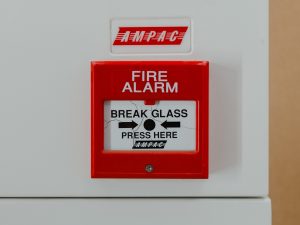
Fire Detection and Alarm Systems actively seek fire, alert the occupants and can advise the fire brigade. To perform as designed and to prevent false alarms, they require Routine Service, Inspection and Testing to AS 1851. We schedule monthly and six-monthly and annual checks, including an annual comprehensive survey that verifies detectors, sounders and system interfaces.
What we service
Fire Indicator Panels (FIP), addressable and conventional detection systems
Aspirating smoke detection such as VESDA
- Smoke detectors, thermal detectors, manual call points and flame detectors
Sounders, strobes and interface devices such as mechanical interface devices including HVAC
What we do
Routine Service to AS 1851 with clear records including completed FIP log books
Fast fault finding, repairs, upgrades and system modifications
Installation and integration of new detection and alarm equipment and extensions to existing networks
Outcome
Full compliance with AS 1851 / AS 1670, reduced false alarms, certainty of compliance
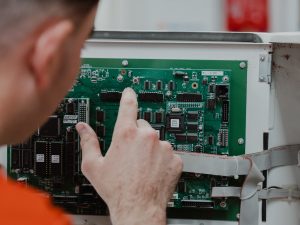
EWS advises occupants when a fire or other emergency is occurring in the building. It delivers clear tones and voice messages, plus it permits fire wardens and building management to clearly communicate during a fire or emergency. We keep your system ready to perform with Routine Service to AS 1851 and equipment installed and maintained in line with AS 1670.4 and the NCC.
What we service
- Emergency Warning & Intercommunication Systems, Emergency Warning Systems and Occupant Warning Systems
Master Emergency Control Panel, speaker zones and amplifiers
Warden Intercommunication Phones (WIPs) and cabling
Pre-recorded messages, manual controls and interfaces to the FIP
Emergency Alarm Initiating Device (EAID)
Routine service and compliance
Scheduled monthly and annual tests to AS 1851
Annual verification that tones are heard in all areas, including decibel tests.
Five-year speech intelligibility checks to confirm clarity of announcements
Battery and backup power checks, fault rectification, battery replacement and clear records
Why it matters
Regular maintenance supports orderly evacuation, and helps you meet your legal obligations for larger buildings such as high-rise, hospitals and aged care, shopping centres, assembly venues and education facilities.
What you can expect
Routine Service to AS 1851 with clear, compliant records
Fast fault finding, repairs and system modifications
Minimal disruption, coordinated by our Panels Division
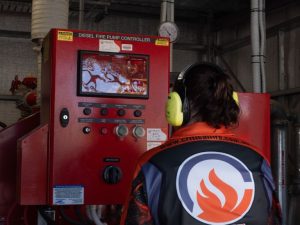 Automatic Fire Sprinklers suppress or control a fire. Fire Pumps provide the flow and pressure required for Sprinklers and Hydrants to operate effectively. Fire water tanks ensure there is enough water supply when you need it most. We keep these systems ready to perform with Routine Service to AS 1851, clear records and fast corrective works.
Automatic Fire Sprinklers suppress or control a fire. Fire Pumps provide the flow and pressure required for Sprinklers and Hydrants to operate effectively. Fire water tanks ensure there is enough water supply when you need it most. We keep these systems ready to perform with Routine Service to AS 1851, clear records and fast corrective works.
What we service
Sprinkler systems: wet, dry and deluge, valves and alarm devices
Fire pumpsets: diesel and electric pumps, jacking pumps and controllers
Fire water storage tanks: level controls, strainers and condition checks including drain and cleaning
Interfaces to hydrants, detection and monitoring
What we do
Scheduled inspection, testing and preventative maintenance to AS 1851
Pump run and flow tests, pressure and alarm verification
Valve inspection, trip tests and impairment management with permits and notices
Water tank inspections and maintenance with documented findings
Fault finding, repairs and upgrades with minimal disruption
Clear logbooks and compliance reports that stand up to scrutiny
Outcome
Reliable pressure and water supply, fewer failures, strong compliance across your site and systems ready should a fire occur
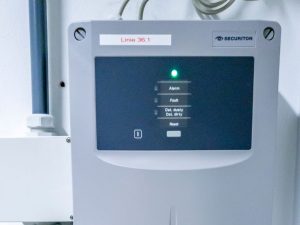 Aspirating smoke detection gives very early warning of smoke, much earlier than a standard smoke detector. A network of small sampling pipes continually draws air back to a central analyser where laser-based sensing can identify minute smoke particles long before conventional detectors respond. That extra time helps you investigate, isolate risk, protect assets and keep people plus operations safe.
Aspirating smoke detection gives very early warning of smoke, much earlier than a standard smoke detector. A network of small sampling pipes continually draws air back to a central analyser where laser-based sensing can identify minute smoke particles long before conventional detectors respond. That extra time helps you investigate, isolate risk, protect assets and keep people plus operations safe.
Where it fits
Data centres, server rooms and switch rooms
Clean rooms and health facilities
High-airflow or high-ceiling spaces
Heritage, archives, art gallerys, museums and warehouses
Cold storage and harsh or dusty environments
What we do
Routine Service to AS 1851: airflow and pipe integrity checks, filter replacement, detector health, thresholds, alarm and fault verification, with updated logbooks and clear records
Fault finding, filter replacement, repairs and performance tuning to minimise nuisance alarms
Installation and integration of ASD equipment and extensions to existing detection networks
Interface to FIP, BMS and shutdown controls as required
Outcome
Very early warning, enhanced asset protection, fewer disruptions and strong compliance for sensitive, high-value spaces.
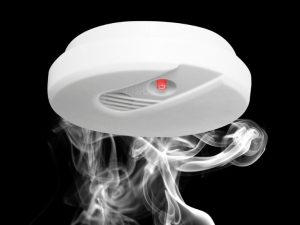 Keep your people safe and your site compliant with supply, installation, testing and certification of smoke alarms to AS 3786 and NCC (BCA) requirements. We set up a simple service program that reduces false alarms and proves compliance.
Keep your people safe and your site compliant with supply, installation, testing and certification of smoke alarms to AS 3786 and NCC (BCA) requirements. We set up a simple service program that reduces false alarms and proves compliance.
What we do
Supply and Install photoelectric smoke alarms and interconnect these alarms where required
Location checks and mounting to AS 3786 and NCC
Six-monthly functional checks and annual simulated smoke / heat tests
Battery replacement and cleaning annually
10-year replacement scheduling and reminders
Fault finding, replacements and upgrades
Documentation
Certificates of installation and compliance
Service records that stand up to scrutiny
Outcome
Fewer false alarms, clear certification and alarms that work when it matters.
Ready to feel confident about fire safety?
Book your free Fire Safety Assessment. Get a clear plan aligned to AS 1851 with simple next steps.
